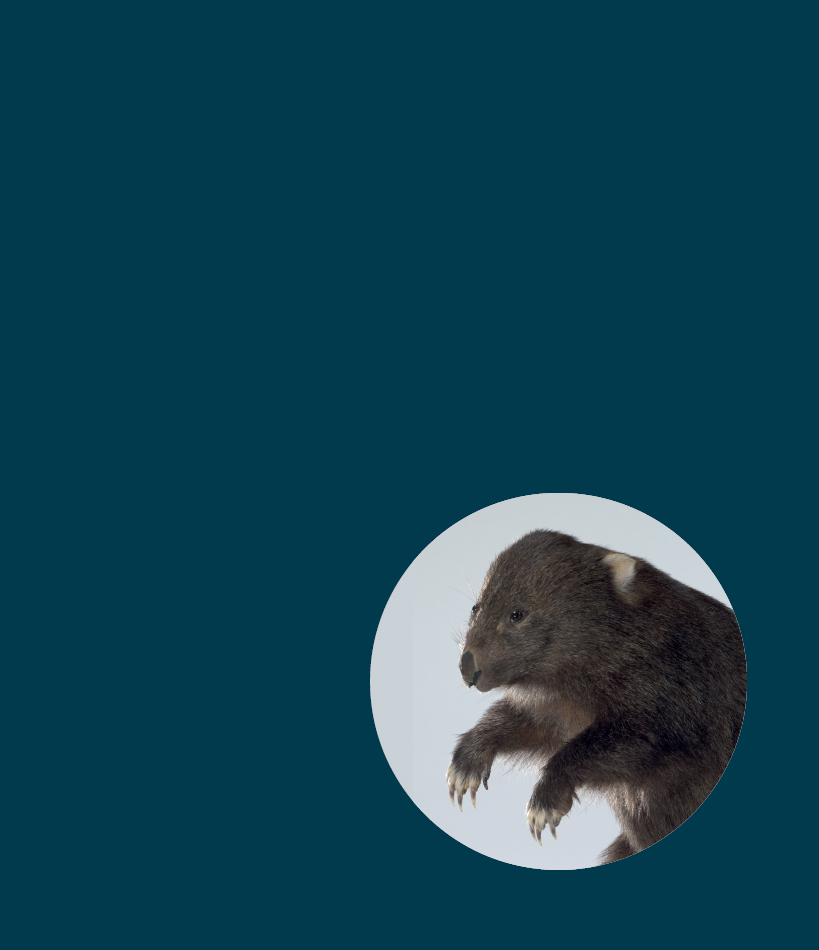
The wombat lay, full length,
as long as a big dog, but thicker set,
a mass of weight and muscle.
Soft still, his bulk gave but didn’t shift.
It gives me an uneasy feeling
to leave an animal on a road
to flatten into fur and flesh
under so many tyre prints.
You may say that bone dust is all the same—
that morsels for ravens
or worms are neither here nor there
but those meaty silhouettes receding
into ignominious shadows
on the asphalt make me unhappy.
Here, right on the bend,
this dead wombat was a ploy
to catch the outer front wheel
unawares; someone’s wheel
some time in the night
had caught his living self by surprise.
His head was as big as a person’s
and his grey palms big and soft as
a child’s, with lines scored:
the line of fate, the line of the heart.
His fur was not like that of a possum—
even, mink-like to the touch;
his pelt was all manner of hair:
dense brown under-fleece to keep him warm,
marsupial-grey flecked outer fur he shared
with wallaby and bandicoot
for melting into landscapes;
but struck all through in one
inexorable direction from head
to rear like a boar’s or an otter’s,
these needle-thick and pointed-at-the-end
black hairs. They seemed to be
his courage and his will.
His small eyes, his lesser sense,
already dull, evacuated; his nose,
the greater part of his great head.
His claws and shoulders brought to mind
the anecdotes of those who, rearing orphan wombats
in a human house, find, returning home,
the babies have made soft work
of plywood doors and hardwood floors.
In the end, the only way to move his bulk
was to hook an arm under each of his
and haul him like a dead man
off the yellow gravel across the ditch
and leave him on the grass bank
as if in deep repose.
Somehow, his poor back leg,
already gnawed away to the bone
by a devil or a quoll or a dog,
with its missing claw
had tucked itself away out of sight.
There he lies;
the living ants and maggots will do their job:
his fur will fall apart, his mass collapse
from within, his head and claws
and massive shoulders
the last to tie him to his shape and life
as the rest recedes into two dimensions:
an arrangement of bones upon the drying grass,
summer warming up his patch of earth;
the forest ravens jawing higher up the hill,
a magpie carolling each lightening morning
and skylarks overhead
rising on each ascending note.